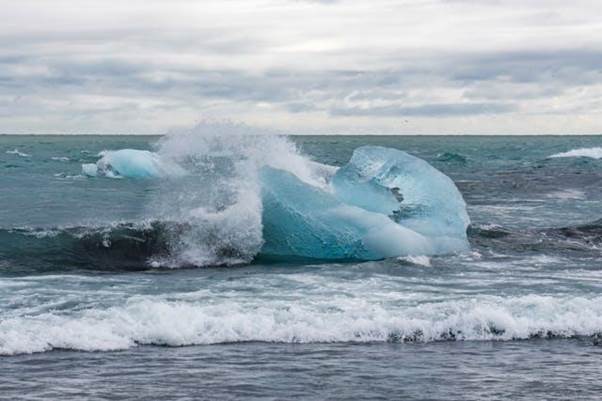One of the most visible signs of climate change is glacier retreat, a phenomenon where glaciers lose mass and shrink in size due to rising global temperatures. For centuries, glaciers have served as vital freshwater reservoirs, climate regulators, and cultural landmarks. However, in recent decades, the rapid pace of glacier retreat has raised concerns among scientists, policymakers, and communities worldwide. Understanding the causes and impacts of this issue is essential for finding sustainable solutions to protect both ecosystems and human livelihoods.

What Is Glacier Retreat?
Glacier retreat refers to the process in which a glacier’s terminus, or end point, moves backward as melting outpaces the accumulation of new ice. Unlike seasonal melting, which is part of a glacier’s natural cycle, long-term retreat signals a persistent imbalance. This retreat is often measured through satellite imagery, ground surveys, and climate data, which consistently show that glaciers across the globe are shrinking at alarming rates.
Causes of Glacier Retreat
The primary driver of glacier retreat is global warming, caused largely by greenhouse gas emissions from human activity. Rising temperatures accelerate ice melt while reducing snowfall that replenishes glaciers. Additional factors include:
- Changes in precipitation patterns: Reduced snowfall means less ice accumulation.
- Soot and particulate pollution: Dark particles on ice surfaces absorb more heat, increasing melt rates.
- Oceanic warming: Coastal glaciers retreat faster due to contact with warming seawater.
- Geological factors: The slope, altitude, and location of a glacier also influence how quickly it retreats.
These combined forces make glacier retreat one of the clearest indicators of human-induced climate change.
Related article: The Icy Reality of Glacier Retreat
Global Hotspots of Glacier Retreat
Glaciers around the world are retreating, but some regions are experiencing more dramatic changes.
- The Himalayas: Known as the “Third Pole,” these glaciers feed major rivers such as the Ganges and Indus. Retreat threatens water supplies for millions.
- The Alps: Europe’s glaciers are retreating rapidly, altering tourism, hydropower, and local ecosystems.
- Greenland and Antarctica: These polar ice sheets contain enough ice to raise sea levels significantly if retreat continues unchecked.
- Andes Mountains: Retreating glaciers impact agriculture and drinking water in South America.
Each region faces unique challenges, but all share the urgent need to adapt to glacier retreat.
Environmental Consequences of Glacier Retreat
The effects of glacier retreat extend far beyond shrinking ice masses. Key environmental impacts include:
- Sea-level rise: Melting glaciers contribute significantly to global sea-level increases, threatening coastal cities.
- Loss of freshwater: Many rivers and lakes depend on glacier runoff, and their decline leads to water scarcity.
- Ecosystem disruption: Cold-water habitats disappear, endangering species that rely on glacial streams.
- Increased natural hazards: Retreating glaciers can form unstable lakes that burst and cause floods.
These consequences highlight how glacier retreat reshapes both natural landscapes and human settlements.
Societal and Economic Impacts
The impacts of glacier retreat are not confined to nature they directly affect human societies. Communities that rely on glacier-fed rivers face reduced water for agriculture, energy production, and daily consumption. Tourism industries in areas like the Alps and Himalayas suffer as iconic glaciers vanish. Furthermore, rising seas caused by glacier melt increase flooding risks, threatening infrastructure and displacing populations. The economic costs of adapting to these changes are immense, making glacier retreat not just an environmental issue but a global socio-economic challenge.
Related article: Rock Glaciers: Nature’s Hidden Frozen Giants
Scientific Research on Glacier Retreat
Scientists continuously study glacier retreat to predict its pace and impacts. Satellite monitoring, climate modeling, and ice-core sampling provide critical data. These studies confirm that retreat rates have accelerated since the mid-20th century. Research also shows that some smaller glaciers may vanish completely within decades. By understanding the mechanics of glacier retreat, scientists can offer better projections for policymakers, helping them prepare for future challenges.

Mitigation and Adaptation Strategies
While reversing glacier retreat entirely may be impossible in the short term, mitigation and adaptation can slow its pace and lessen its impacts. Strategies include:
- Reducing greenhouse gas emissions through renewable energy, sustainable transport, and conservation efforts.
- Water management systems to adapt to reduced glacial runoff.
- Community awareness programs that educate people on sustainable practices.
- International cooperation to meet global climate targets like those set in the Paris Agreement.
These steps emphasize that while glacier retreat is a daunting challenge, it is not insurmountable with collective action.
The Role of Public Awareness
Public understanding of glacier retreat plays a crucial role in driving change. Documentaries, research publications, and educational programs raise awareness about the urgency of the issue. When individuals recognize how their everyday choices contribute to climate change, they are more likely to support policies and practices that address the root causes of glacier retreat.
Conclusion
Glacier retreat is one of the most striking and alarming consequences of climate change. Its causes are rooted in human activity, and its impacts span environmental, social, and economic spheres. By acknowledging the seriousness of this issue and taking action to mitigate its effects, humanity can work toward a more sustainable future. Protecting glaciers means preserving water resources, biodiversity, and cultural heritage for generations to come. The fight against glacier retreat is ultimately a fight for planetary balance and human survival.